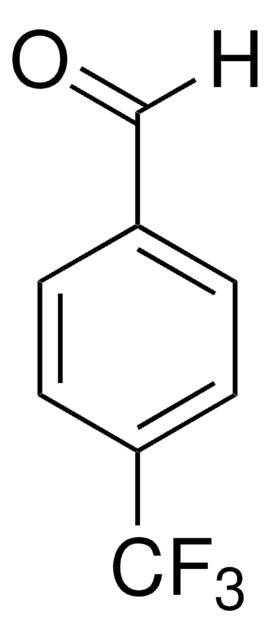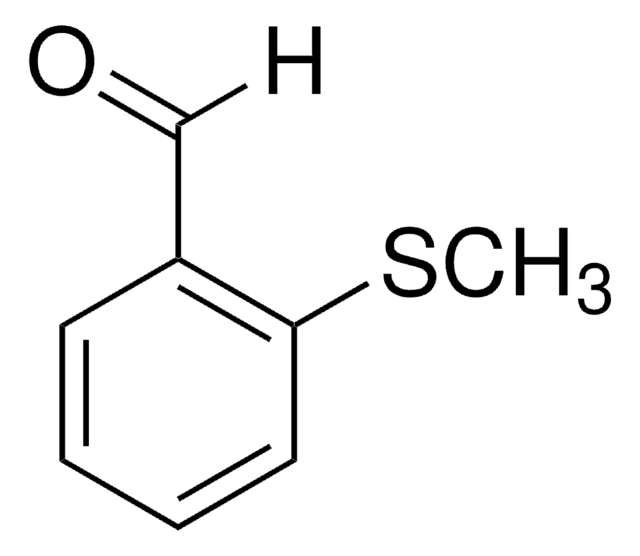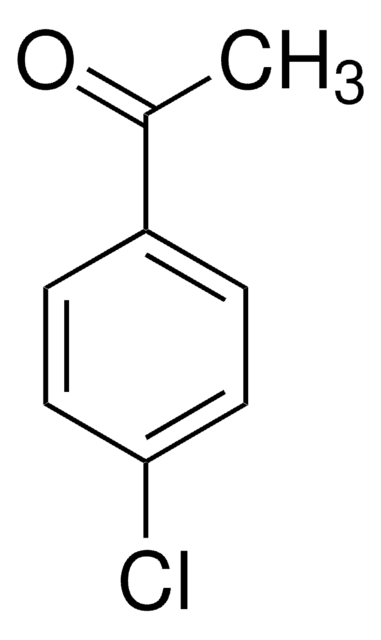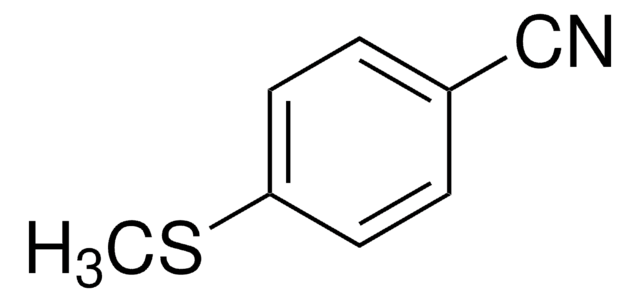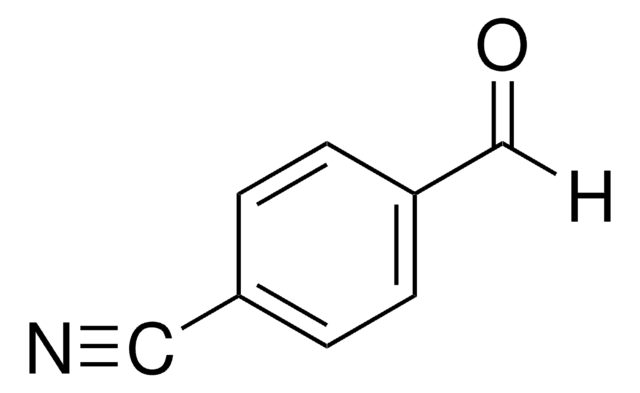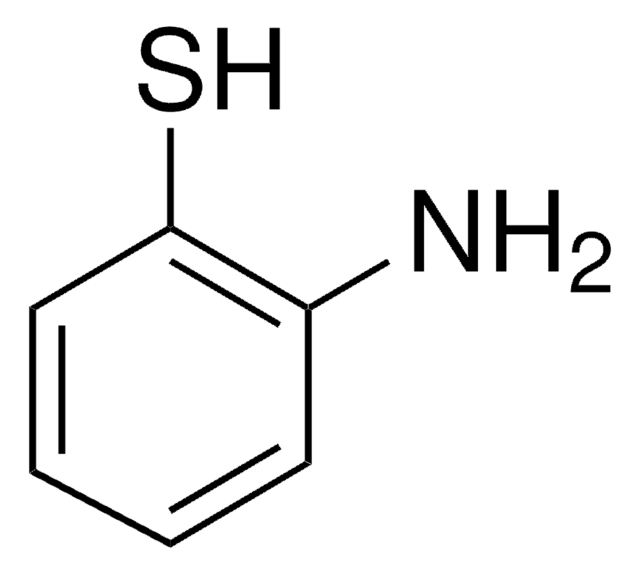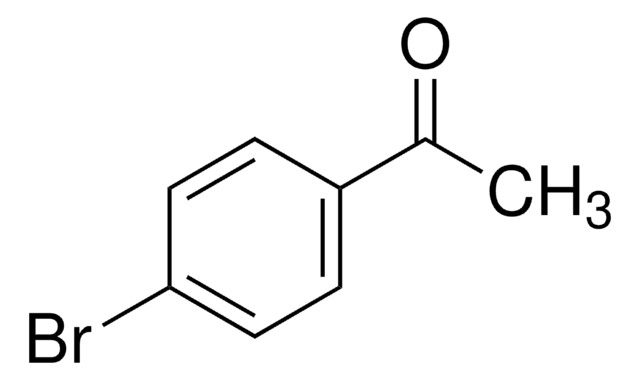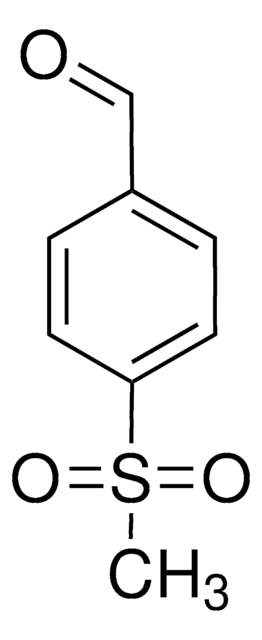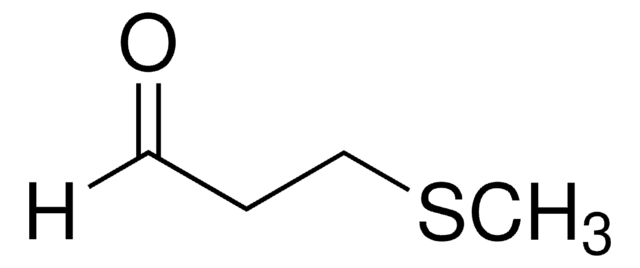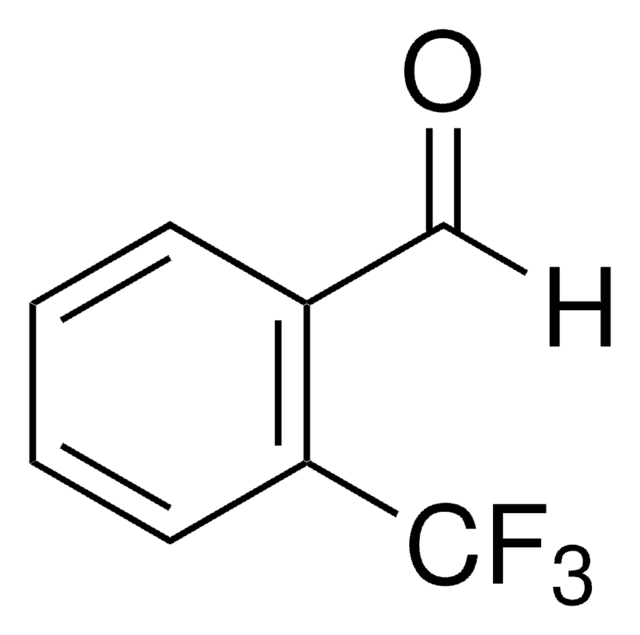222771
4-(Methylthio)benzaldehyde
95%
Synonym(s):
4-(Methylmercapto)benzaldehyde
Sign Into View Organizational & Contract Pricing
All Photos(1)
About This Item
Linear Formula:
CH3SC6H4CHO
CAS Number:
Molecular Weight:
152.21
Beilstein:
636158
EC Number:
MDL number:
UNSPSC Code:
12352100
PubChem Substance ID:
NACRES:
NA.22
Recommended Products
Assay
95%
form
liquid
refractive index
n20/D 1.646 (lit.)
bp
86-90 °C/1 mmHg (lit.)
density
1.144 g/mL at 25 °C (lit.)
functional group
aldehyde
SMILES string
[H]C(=O)c1ccc(SC)cc1
InChI
1S/C8H8OS/c1-10-8-4-2-7(6-9)3-5-8/h2-6H,1H3
InChI key
QRVYABWJVXXOTN-UHFFFAOYSA-N
Looking for similar products? Visit Product Comparison Guide
Storage Class Code
10 - Combustible liquids
WGK
WGK 3
Flash Point(F)
230.0 °F - closed cup
Flash Point(C)
110 °C - closed cup
Personal Protective Equipment
dust mask type N95 (US), Eyeshields, Gloves
Choose from one of the most recent versions:
Already Own This Product?
Find documentation for the products that you have recently purchased in the Document Library.
Customers Also Viewed
S S Shin et al.
Bioorganic & medicinal chemistry letters, 11(2), 165-168 (2001-02-24)
A series of 2,2-dimethyl-5-[4-(methylsulfonyl)phenyl]-4-phenyl-3(2H)furanones was prepared and evaluated for their ability to inhibit cyclo-oxygenase-2 (COX-2).
Coraline Simon et al.
Toxicology in vitro : an international journal published in association with BIBRA, 37, 121-133 (2016-10-19)
Endocrine activity of 65 compounds migrating from polycarbonate replacement plastic baby bottles was assessed using in vitro cell based assays (reporter gene assays) involving 7 nuclear receptors, i.e. human steroid hormones receptors (oestrogen, androgen, progesterone and glucocorticoid receptors), human thyroid
Matthias Onghena et al.
Food additives & contaminants. Part A, Chemistry, analysis, control, exposure & risk assessment, 31(12), 2090-2102 (2014-11-20)
In 2011, the European Union prohibited the production of polycarbonate (PC) baby bottles due to the toxic effects of the PC monomer bisphenol-A. Therefore, baby bottles made of alternative materials, e.g. polypropylene (PP) or polyethersulphone (PES), are currently marketed. The
Our team of scientists has experience in all areas of research including Life Science, Material Science, Chemical Synthesis, Chromatography, Analytical and many others.
Contact Technical Service